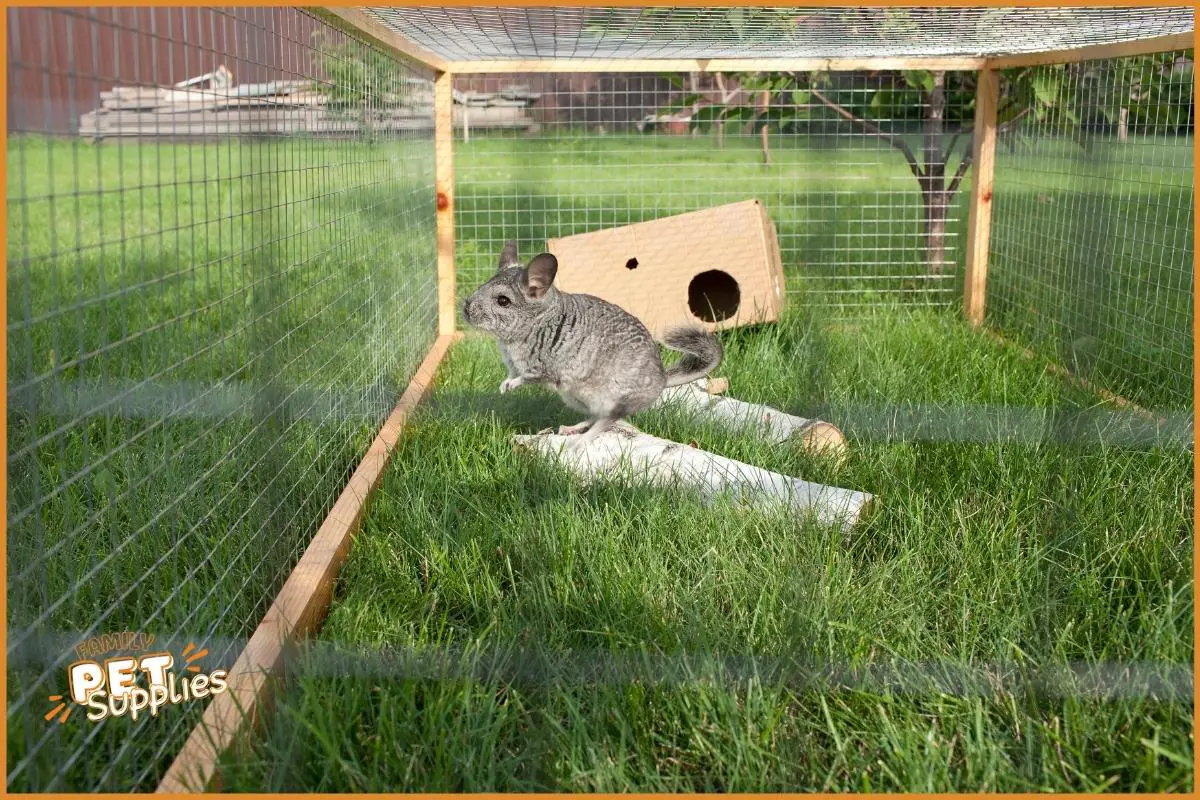Male chinchillas can live together, especially if introduced at a young age. Establishing territories and dominance can occur. Monitoring their interactions and providing ample space reduces conflicts. If aggression occurs, they might need separate housing.

Key Takeaways
- Understanding the social behavior of male chinchillas is crucial.
- Introduce them at a young age when they’re more likely to accept a new companion.
- Provide a spacious cage with separate areas for each chinchilla to establish their own territory.
- Close observation is crucial to maintain a safe and harmonious environment.
Factors to Consider Before Housing Male Chinchillas Together
Before housing male chinchillas together, you should consider several factors to ensure their well-being and minimize conflicts.
Understanding the social behavior of male chinchillas is crucial. These animals are naturally territorial and establishing dominance is a normal part of their social hierarchy. However, some male chinchillas may exhibit aggressive behavior towards each other, which can lead to serious injuries.
To increase the chances of successful male chinchilla cohabitation, you should follow a few tips. Firstly, introduce them at a young age when they’re more likely to accept a new companion. Secondly, provide a spacious cage with separate areas for each chinchilla to establish their own territory.
Additionally, monitor their interactions closely and be prepared to separate them if aggression arises. By considering these factors and implementing the right strategies, you can create a harmonious living environment for your male chinchillas.
Introducing Male Chinchillas at a Young Age
To successfully introduce male chinchillas at a young age, it’s important to follow certain guidelines.
Male chinchilla bonding is influenced by their social behavior, so the initial introduction should be done gradually. Start by placing their cages next to each other, allowing them to become familiar with each other’s scent.
After a few days, you can try supervised playdates in a neutral space, ensuring there are hiding spots and toys to reduce potential conflicts. Observe their interactions closely, looking for signs of aggression or dominance.
If any aggression occurs, it’s important to separate them and try again later. Providing ample space and resources, such as separate food and water bowls, can also help minimize conflicts.
Establishing Territories and Dominance
When introducing male chinchillas at a young age, it’s important to establish territories and dominance among them. Fostering companionship while managing territorial behavior is crucial for their well-being.
Chinchillas are naturally social animals, and with proper guidance, they can learn to coexist harmoniously. To establish territories, provide separate cages initially, allowing each chinchilla to claim their personal space.
Gradually, introduce supervised playtime in a neutral area to encourage socialization. During this time, observe their interactions closely, as dominance behaviors, such as mounting or chasing, are normal. However, if aggression escalates and poses a threat to their safety, separate housing may be necessary.
Importance of Monitoring Interactions
Ensure close observation of their interactions to maintain a safe and harmonious environment for male chinchillas living together. It’s important to monitor their interactions to ensure that they’re socializing properly and not displaying aggressive behavior towards each other. By closely observing their interactions, you can identify any signs of aggression or dominance and intervene if necessary.
This is crucial for managing the chinchilla hierarchy and preventing fights or injuries. Socialization is key for male chinchillas living together, as it allows them to establish their roles within the group and reduces the risk of territorial disputes. By monitoring their interactions, you can create a positive living environment where they can coexist peacefully.
Providing Ample Space for Male Chinchillas
Continue creating a safe and harmonious environment for your male chinchillas by providing them with ample space to establish their territories and minimize conflicts. Giving them enough room to roam and explore is crucial for their well-being and successful cohabitation.
When chinchillas have enough space, they can create separate areas within their enclosure, reducing the chances of territorial disputes. Providing multiple levels, platforms, and hiding spots can further enhance their living space and give them opportunities for exercise and mental stimulation.
Environmental enrichment is also essential for their overall happiness and contentment. Including items such as chew toys, tunnels, and platforms can keep them engaged and prevent boredom.
Dealing With Aggression: Signs and Solutions
To address aggression between male chinchillas, you must address the underlying causes and implement appropriate solutions. Recognizing aggression is crucial in resolving conflicts between male chinchillas. Keep an eye out for aggressive behaviors such as biting, chasing, and vocalizations. These signs indicate a potential conflict that needs to be addressed.
When aggression occurs, it’s important to separate the chinchillas to prevent further escalation and injuries. Provide each chinchilla with their own separate living space to reduce stress and territorial disputes. Additionally, consider neutering your chinchillas, as it can help reduce aggression and dominance-related behaviors.
Gradual reintroduction under supervised conditions may be attempted after a period of separation, but it’s essential to closely monitor their interactions. Remember, the well-being and safety of your chinchillas should always be the top priority.
Separate Housing for Male Chinchillas if Necessary
If aggression between male chinchillas persists, it may be necessary to provide them with separate housing. Despite efforts to manage their aggression, some chinchillas simply can’t coexist peacefully. When this happens, it’s crucial to prioritize their safety and well-being.
Separate housing ensures that they aren’t constantly exposed to each other’s presence, reducing the likelihood of fights and injuries. Creating separate living spaces for each chinchilla allows them to establish their own territories and maintain a sense of security.
It’s important to provide each chinchilla with ample space, enrichment, and social interaction to prevent loneliness and boredom. While separate housing may not be the ideal situation for male chinchillas, it’s a necessary step to ensure their individual health and happiness in cases of persistent aggression.

